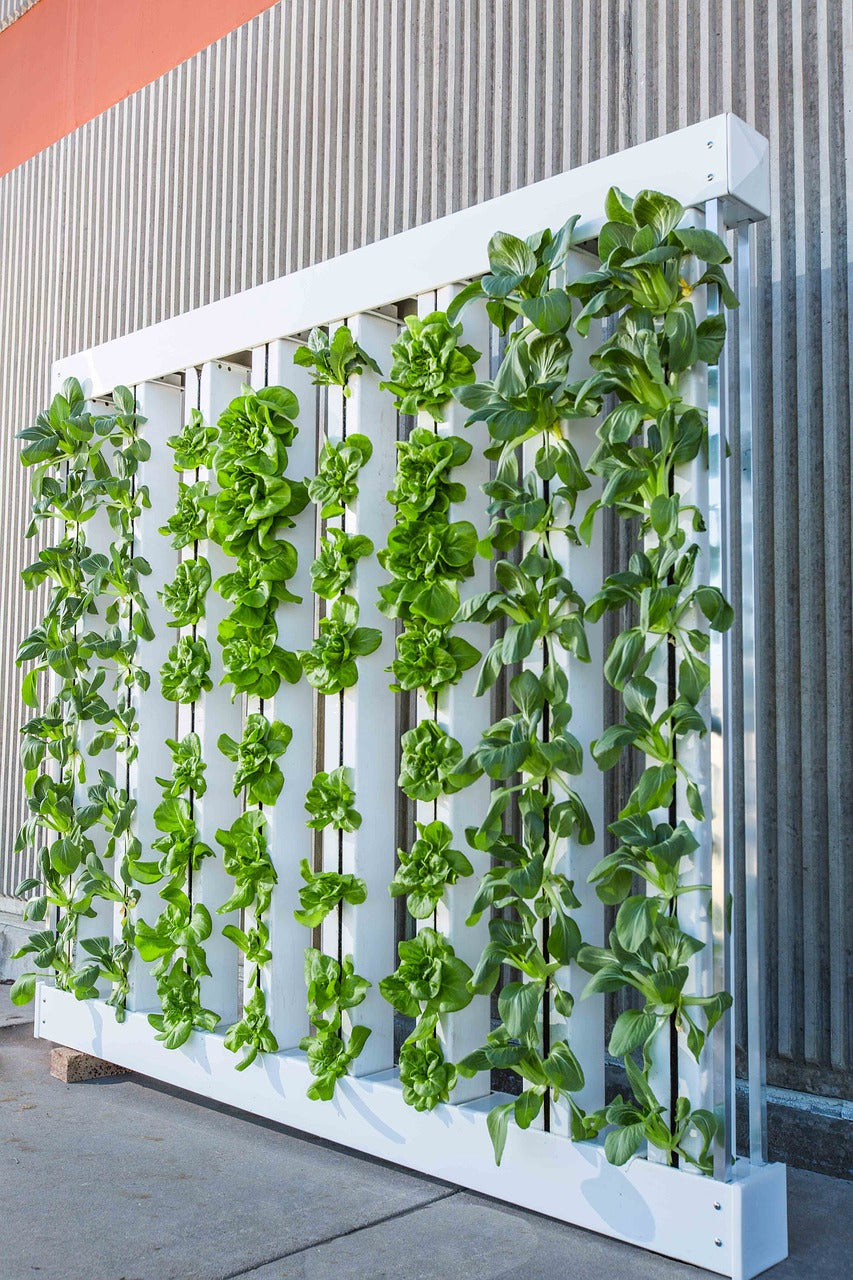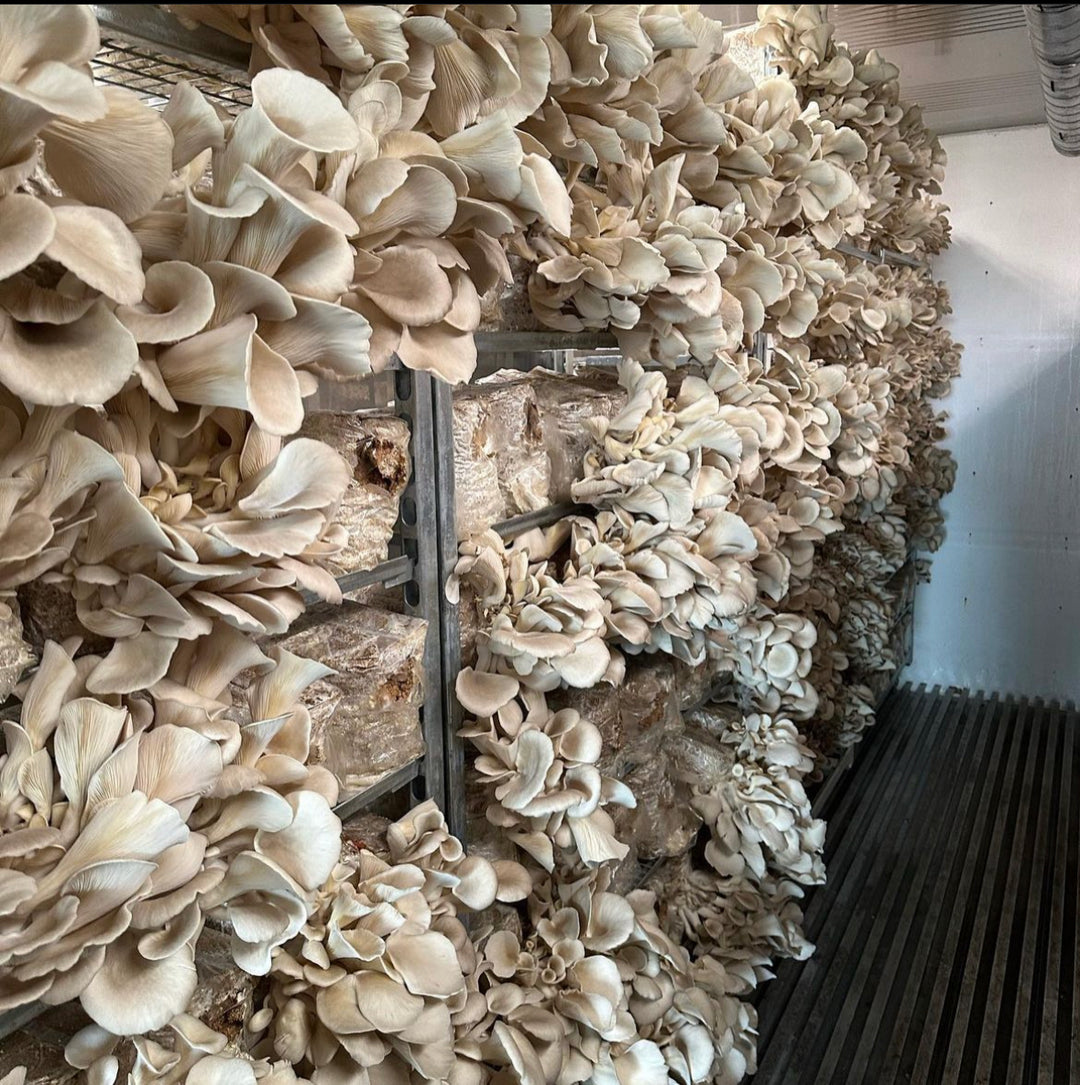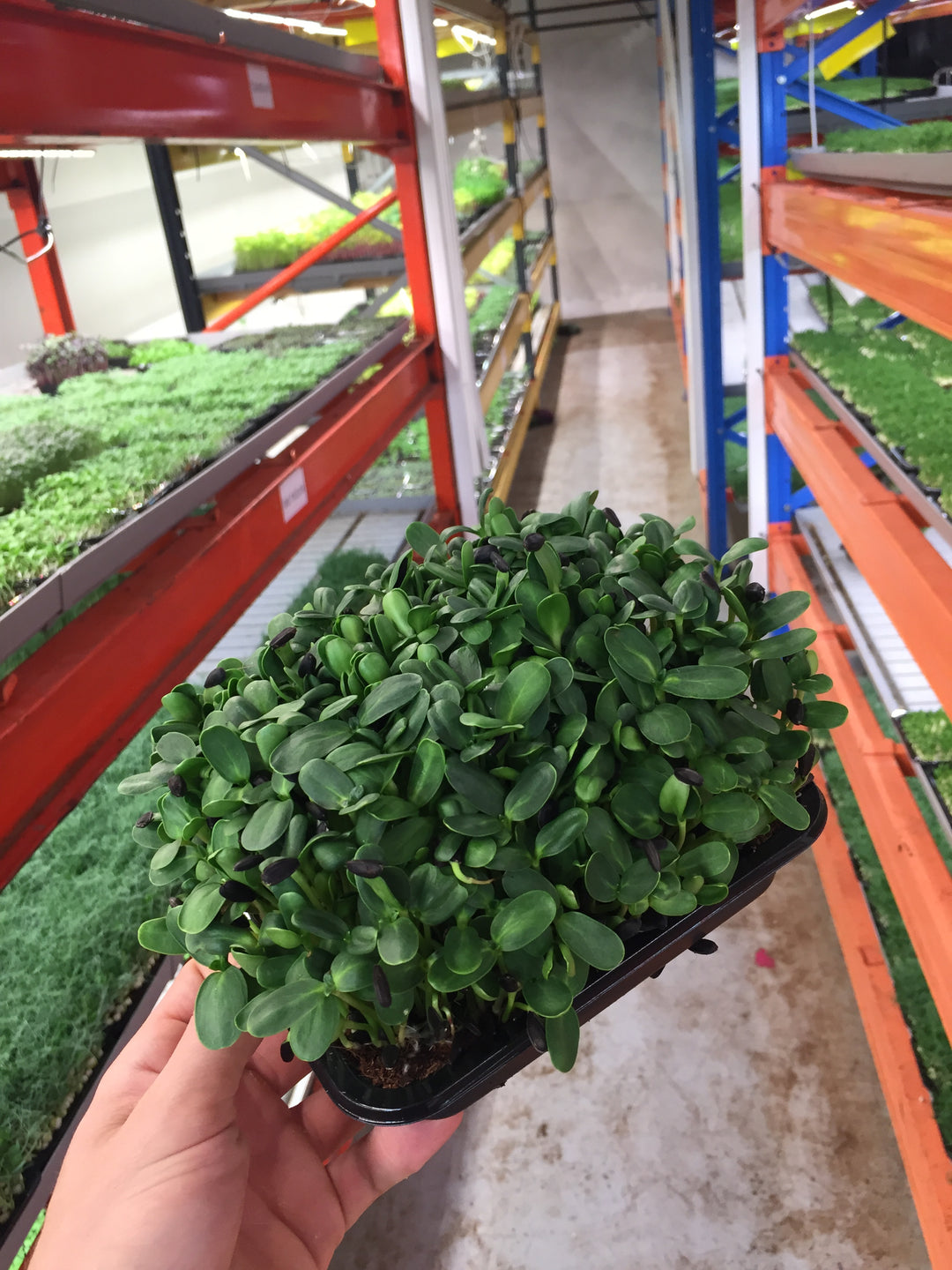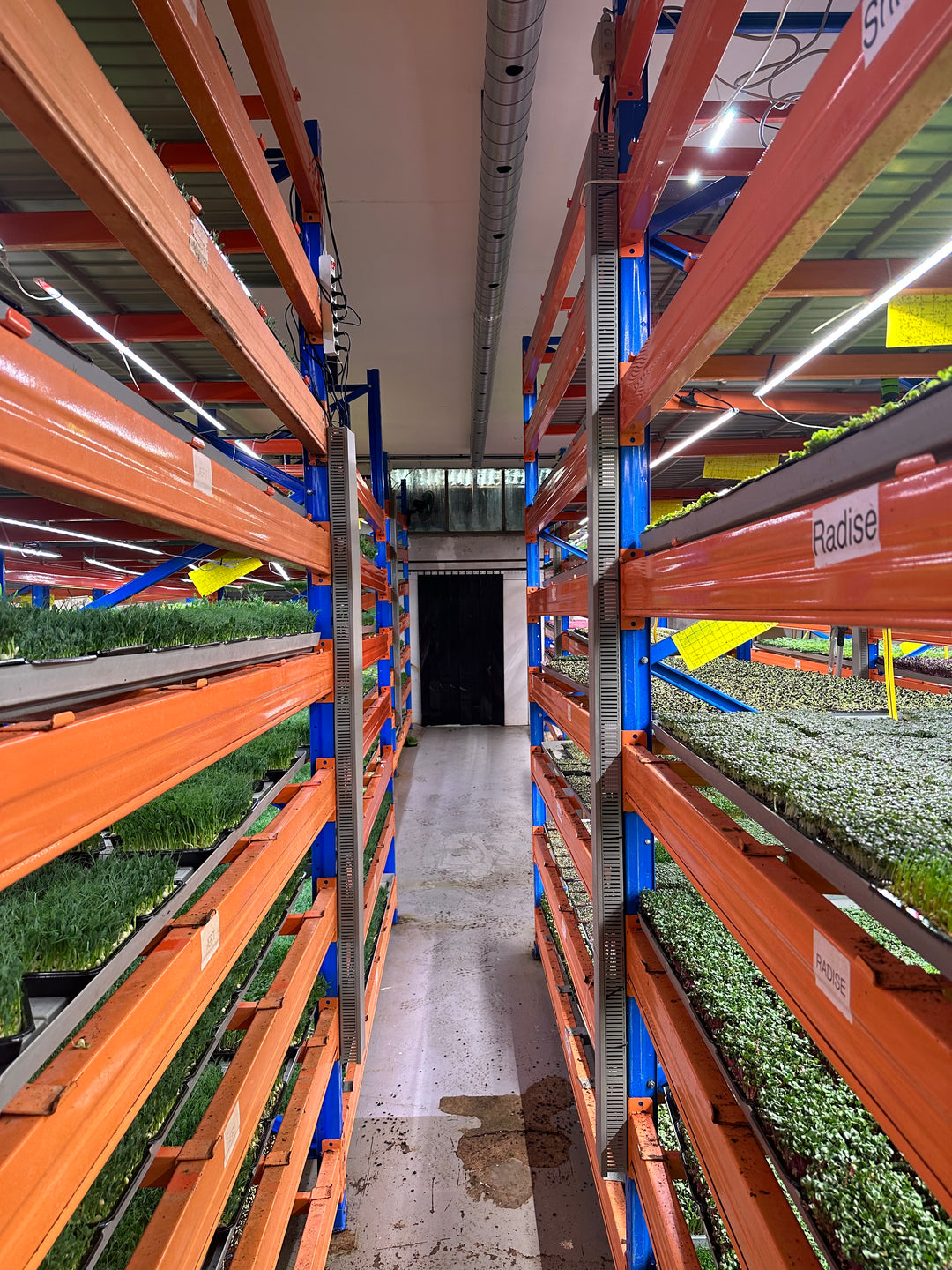Advantages of Growing Salads in a Vertical Farm

The modern agricultural landscape is rapidly changing, with increasing emphasis on sustainability, food security, and resource efficiency. Among the innovative farming practices emerging, vertical farming stands out as a promising solution to address many of the challenges traditional agriculture faces. One crop that particularly thrives in vertical farming systems is salad greens, including lettuce, arugula, spinach, and various herbs. In this blog post, we will explore the advantages of growing salads in vertical farms and why this method is becoming an increasingly popular choice for urban farming and large-scale agriculture alike.
1. Space Efficiency: Maximizing Vertical Space
One of the most significant advantages of vertical farming is its ability to maximize space. Traditional farming relies on large, open fields, which require vast expanses of land for even small-scale crop production. In contrast, vertical farms use vertical stacks of growing surfaces, often in controlled indoor environments. This method allows for the cultivation of large quantities of salad greens in a relatively small footprint, making it ideal for urban areas or locations where arable land is scarce or expensive.
For instance, a vertical farm can yield the same quantity of salad greens as a conventional farm but with just a fraction of the space. By growing crops in vertically stacked layers, these farms utilize the vertical dimension of a building or greenhouse, enabling them to produce food in densely populated urban areas without the need for vast expanses of land.
2. Water Conservation: Reducing Water Usage
Water scarcity is one of the most pressing challenges in agriculture today, particularly in arid regions and areas affected by climate change. Vertical farms, particularly those using hydroponic or aeroponic growing methods, can significantly reduce water consumption compared to traditional soil-based farming.
In hydroponics, plants grow with their roots submerged in a nutrient-rich water solution, while aeroponics involves growing plants in air with their roots misted with nutrients. Both of these methods use far less water than conventional soil-based farming, as the water in these systems is recirculated and reused, leading to up to 90% less water usage than traditional farming. Salad greens, being water-intensive crops, benefit particularly from these water-efficient systems. In a vertical farm, you can grow large amounts of salad greens while conserving this precious resource.
3. Reduced Use of Pesticides and Herbicides
In traditional farming, pests and diseases can pose significant threats to crop yields, often leading to the widespread use of pesticides and herbicides. However, in a vertical farm environment, the controlled conditions and closed-loop systems help mitigate many of the pest-related issues that are common in outdoor farming. Because vertical farms are typically indoors, they can be designed to prevent pests from accessing the plants, reducing the need for chemical interventions.
Additionally, the controlled environment allows for optimal plant health, which naturally reduces the likelihood of disease. Without the need for toxic chemicals, salad greens grown in vertical farms can be healthier and more environmentally friendly, appealing to consumers who are concerned about pesticide residues in their food.
4. Faster Growth and Year-Round Production
Vertical farming enables year-round cultivation, regardless of weather conditions or seasonality. This is particularly beneficial for crops like salad greens, which have relatively short growth cycles. In a vertical farm, the controlled environment allows farmers to optimize light, temperature, humidity, and nutrient levels to speed up plant growth. As a result, crops can grow faster than they would in traditional fields.
For example, lettuce, one of the most popular salad greens, typically takes around 30-45 days to grow in vertical farms, depending on the variety and system used. In contrast, outdoor cultivation can take longer due to environmental factors like weather, pests, and soil quality. With vertical farming, you can produce multiple harvests per year, ensuring a continuous supply of fresh salad greens.
This consistent, rapid growth also helps vertical farms maintain a steady output, reducing the dependency on external supply chains that may be subject to disruptions, such as transportation issues or crop failures caused by adverse weather conditions.
5. Reduced Carbon Footprint and Localized Food Production
Transportation is a major contributor to the carbon footprint of food production, particularly when crops are grown far from where they are consumed. Traditional farming often involves long-distance transportation of fresh produce, resulting in significant carbon emissions due to the fuel needed for trucks, ships, and airplanes.
Vertical farms, on the other hand, can be established closer to urban centers, significantly reducing the distance that food needs to travel from farm to table. This not only reduces transportation emissions but also leads to fresher produce for consumers. By growing salad greens locally, vertical farms can contribute to the reduction of food miles, supporting the global effort to combat climate change and promote sustainable agriculture.
6. Improved Food Security
As the global population continues to grow, food security becomes an increasingly critical issue. Vertical farming offers a solution by enabling food production in areas that may not have access to fertile soil or arable land. For example, cities, deserts, and even rooftops can be transformed into productive food-growing spaces using vertical farming systems.
By growing salad greens in urban environments or in regions with limited arable land, vertical farms can help ensure a stable, localized food supply. This is particularly important for areas that face food insecurity due to environmental challenges, geopolitical instability, or economic constraints. Vertical farms can contribute to a more resilient food system, ensuring that fresh produce is always available to local populations.
7. Reduced Transportation Costs and Less Food Waste
Because vertical farms are typically located closer to the end consumer, they can significantly reduce transportation costs, which also leads to lower prices for consumers. In addition to being more cost-effective, the shorter supply chain means less food spoilage. Traditional salad greens often have a short shelf life and require refrigeration or special packaging to maintain freshness during transport, leading to increased waste.
With vertical farms located closer to urban markets, salad greens can be harvested, packaged, and sold more quickly, reducing the time they spend in transit and ensuring that consumers receive fresher, higher-quality products. This can also lead to a decrease in food waste, a significant issue in the global food system.
8. Sustainability and Resource Efficiency
Vertical farming systems, particularly those that utilize hydroponics or aeroponics, make more efficient use of resources such as water, nutrients, and space. These systems are often powered by renewable energy sources such as solar or wind, further reducing their environmental impact. Vertical farming also allows for better control over plant nutrition, resulting in optimized growth and less waste of fertilizers and other inputs.
Salads, which are often grown with relatively simple growing requirements, are an ideal crop for vertical farming, as they can thrive in highly controlled environments and require fewer resources compared to other more resource-intensive crops.
Conclusion
Growing salads in a vertical farm presents numerous advantages, from space efficiency and water conservation to reduced pesticide use and faster growth cycles. The ability to grow fresh, high-quality salad greens year-round, locally, and sustainably is transforming the way we think about food production. As urban populations grow and traditional agricultural systems face increasing pressure, vertical farming offers a viable and innovative solution to the challenges of food security, environmental sustainability, and resource management.
Whether you are a consumer looking for fresh, local produce, or a farmer exploring new ways to optimize your growing practices, vertical farming offers a promising path forward. By embracing these innovative systems, we can create a more sustainable and resilient food system that meets the needs of the present and future generations.


